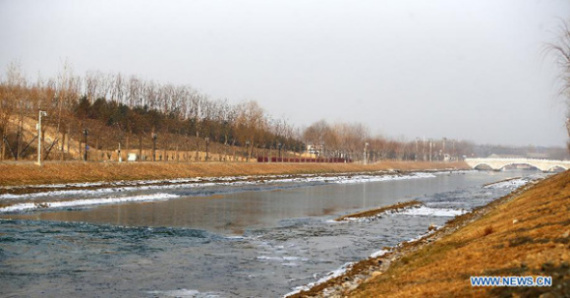
Photo taken on Dec 27, 2014 shows water flowing after the opening of a sluice gate of the middle route of the south-to-north water diversion project in Beijing, capital of China. (Xinhua/Yin Gang)
Nine million residents in Beijing are drinking water from the Yangtze River in the south, four months after the completion of the south-north water diversion project.
Beijing has received 180 million cubic meters of water via the middle route of the water diversion project, which brings from the Danjiangkou Reservoir in the middle-upper reaches of the Hanjiang River, the largest tributary of the Yangtze River, to Henan, Hebei, Beijing and Tianjin.
Roughly 76 percent of the water Beijing receives has been supplied to residents in the downtown area as well as the Daxing and Mentougou districts, alleviating the water shortage for the city's 21 million residents.
The quality of tap water in the city, in Beijing's southern areas in particular, has seen remarkable improvement and the fall of the city's underground water levels is slowing down, according to the office.
Test results of tap water quality all meet national standards for drinking water, said the office. Beijing has carried out more than 10,000 tests through 161 water quality inspection sites in the tap water pipe network.
The supply-demand balance of water resources in Beijing has improved, but the city will still face water shortages for a long period, said Sun Guosheng, head of the office.
Beijing receives about 2 million cubic meters of water from Yangtze per day.
The gigantic south-to-north water diversion project has three routes, the east, middle and west routes transferring water from the lower, middle and upper reaches of the country's longest river respectively. The first stages of the east and middle routes are operational.
Beijing consumes 3.6 billion cubic meters of water annually, but its water resource per capita is only one-eightieth of the world average.
The capital's water supply previously relied heavily on groundwater, but its high calcium and magnesium content irritated residents by clogging showerheads and stiffening laundry.
Beijing plans to receive one billion cubic meters of water per year with the operation of the first stage of the middle diversion route.
















































